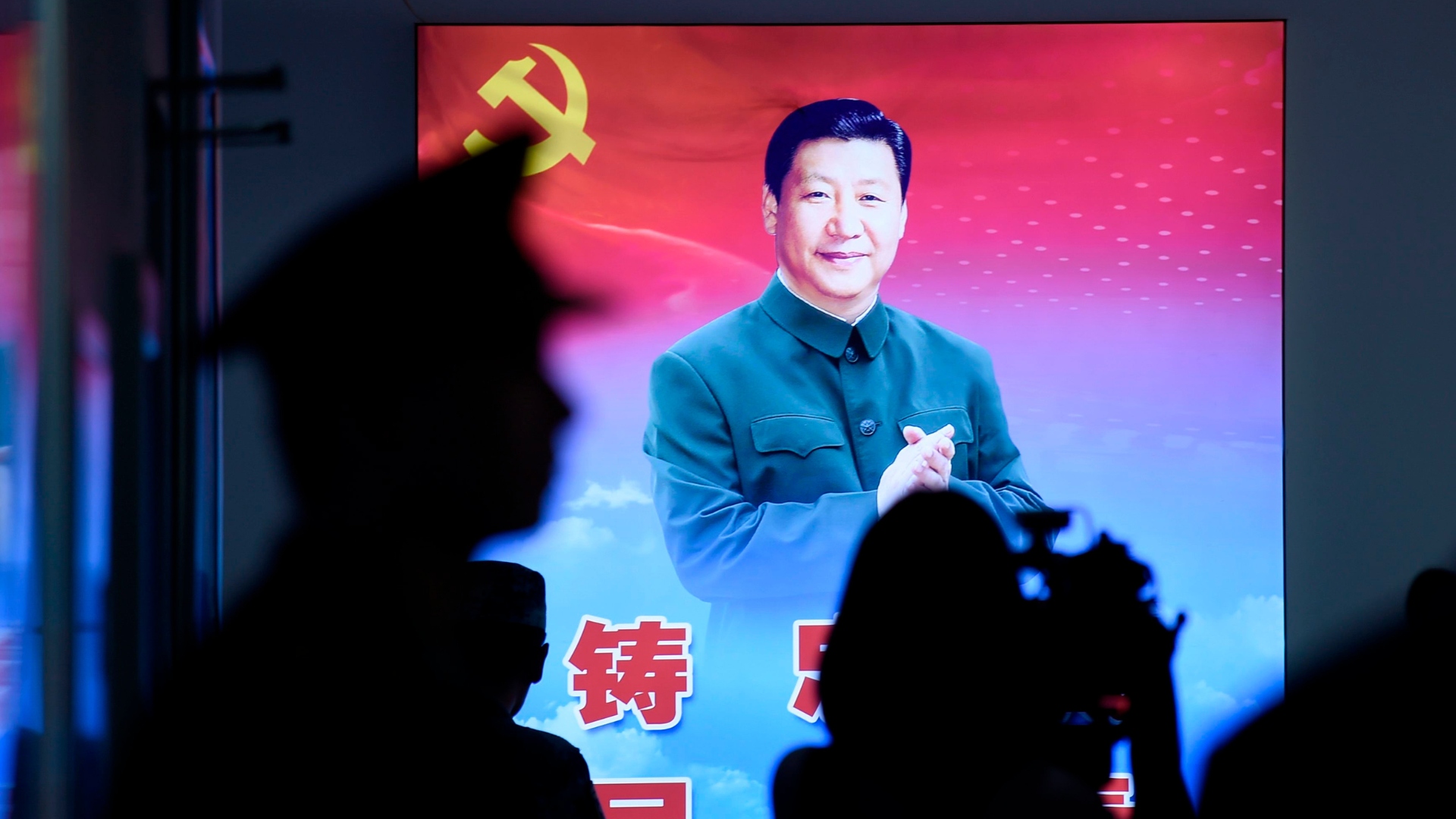
WANG ZHAO/AFP via Getty Images
How China became a global disinformation superpower
When China was roiled by its largest protests in decades, state media responded in kind.
A November 24 apartment fire in Urumqi, the capital of China’s northwestern Xinjiang province, killed at least 10 people and injured at least nine more. Reports that zero-Covid measures delayed firefighters from reaching the blaze prompted unprecedented protests around the country.
State media in China have been blaming foreign forces and trying to distract viewers, which are typical strategies, said Joshua Kurlantzick, the author of a new book, “Beijing’s Global Media Offensive: China’s Uneven Campaign to Influence Asia and the World.”
Chinese media outside the country have had a more interesting response.“They’re not trying to make a major effort to spin it, since it’s pretty hard to spin for foreign audiences,” said Kurlantzick, who is also a senior fellow for Southeast Asia at the Council on Foreign Relations. Instead, they appear to be flooding social media platforms like Twitter with “massive amounts of spam to make it harder for reporters and independent observers to access information about what’s going on.”
In his new book, Kurlantzick analyzes how China is working to become a global media and disinformation superpower through an arsenal of tactics, including through state media, disinformation campaigns and digital infrastructure.
China’s information efforts “could give Beijing more influence over the information that publics in many states consume — on the internet, through social media, on television, and on the radio,” he writes. Beijing’s investments have paid off in some areas — but far from all of them, Kurlantzick found.
I recently spoke with Kurlantzick about his new book. This conversation has been edited for length and clarity.
Can you give me your book’s elevator pitch?
I started out thinking that China was building a very large disinformation and state media influence apparatus and was becoming fairly successful at influencing the domestic politics and societies of other countries over the past decade, which it hadn’t really focused on doing except in a few places like Taiwan. That was my original thesis.
I had seen a big growth in China’s efforts to build up its media and wield information tools and disinformation. Pro-Beijing entrepreneurs were buying up the local Chinese-language media so that there were very few non-pro-Beijing options for Chinese media.
And what I found is they have had some success, but in reality a lot of the funds and time spent to expand state media, making it credible and wielding disinformation and influence in other countries, has actually not worked and in many cases has backfired. China has developed this massive effort to influence other countries, but it has failed as often as not.
What are the main elements of China’s media offensive?
One element is actual state media, like CGTN, China Radio International and Xinhua. The Xi administration has spent a huge amount of money expanding them and trying to upgrade them by hiring quality foreign journalists. But those have almost completely failed. Xinhua has had more success. Xinhua has signed a lot of content sharing agreements with a lot of news agencies around the world. In developing countries, Xinhua is increasingly stepping into the void left by other news wires like the Associated Press, because Xinhua content is free or cheap.
The second prong is control over information pipes, building cables, 5G networks, etc. China has had some success with that in Africa and other places, but they are losing out as Western countries increasingly crack down on a lot of their efforts.
The third prong is an increasingly sophisticated use of disinformation. They have become more sophisticated at using bots and flooding sites with disinformation. For instance, Meta and Twitter recently reported efforts by China to spread disinformation online to influence the U.S. midterm elections in November.
What’s in it for China?
Beijing felt that the entire global media environment was dominated by outlets that were from liberal democracies — NBC, CNN, other major Western news outlets — and that those outlets didn’t cover China fairly. They wanted to be able to get China’s story out there. They wanted to promote China’s own model and also get their views out there and build networks that were capable of delivering this message.
You wrote that the Chinese government tried and failed to make CGTN like Al Jazeera, which is owned by the Qatari government. What went wrong?
They wanted CGTN to be regarded as a credible source of information, like Al Jazeera. But the idea that China could have had something like Al Jazeera was always something of a fantasy. Qatar is a small state, and it has significant foreign policy on a few certain issues. But outside of those issues, Qatar has basically left its Al Jazeera reporters alone. China was never going to be able to do that because virtually any issue could have an impact on China.
You write about the dominance of Xinhua’s content sharing agreements, especially with local news outlets in Southeast Asia. What are the implications of those agreements for people in their daily lives?
Xinhua has had success at reaching audiences, and so those Chinese-language readers are getting a skewed view. It’s dramatically cutting them off. But the greater danger is Xinhua increasingly developing content sharing agreements with local language outlets. Like in Thailand, now there are a lot of Thai-language outlets using Xinhua content. That’s going to become more common in Southeast Asia, except in Singapore, where outlets have the money to pay for the major global wires.
That’s going to be a serious problem because you’re going to have Xinhua copy increasingly picked up by a lot of local news outlets in the local languages. Readers don’t really notice where it comes from. That’s going to skew the views of the general reading public, and that’s quite dangerous.
The story you just read is a small piece of a complex and an ever-changing storyline that Coda covers relentlessly and with singular focus. But we can’t do it without your help. Show your support for journalism that stays on the story by becoming a member today. Coda Story is a 501(c)3 U.S. non-profit. Your contribution to Coda Story is tax deductible.
















